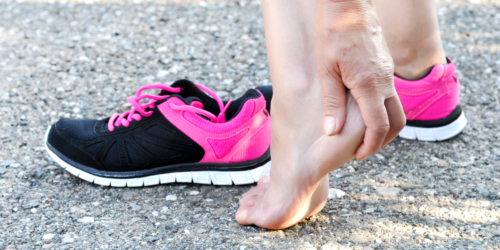How do I know if I have a problem with pronation?
Ever have someone come up to you and tell you that you have a “pronation” problem? What they are trying to do with this piece of advice, albeit unsolicited, is to point out that as you are walking or running, your foot is hitting the ground is an unnatural manner. This type of repetitive misalignment is one of the most common causes of sports injuries of the foot and ankle.
Pronation is an example of the wonder of biomechanics that is the human body. When your foot comes in contact with the ground, the force of the impact is redistributed by a rolling motion, which serves as a kind of shock absorber. The foot twists or rolls inward and supports the weight of the body evenly without the inevitable jarring effect if this mechanism was not present.
When everything is working as it should, the outside of the heel makes contact first, the foot rolls inward approximately fifteen percent and then, without even the need for thinking about it, you push off for the next step using the entire front of the foot. The impact was absorbed efficiently and all is well. But, how important is that roll? What if the foot rolls more or less than fifteen percent?
Overpronation and Underpronation
Excessive inward rolling of foot when hitting the ground contributes to overpronation. Just like the example above, when all is done correctly, the outside of the heel hits first and the foot begins to twist. When it goes farther than the fifteen percent, the shock is not evenly absorbed and during the push-off, instead of the weight being evenly distributed through the entire front of the foot, it becomes focused in mainly the big and second toes. With repetition, this creates stress and pain in the foot, shin and knee and can lead to bunions, calluses, plantar fasciitis and Achilles tendinitis. Because overpronation tends to cause the muscles to tighten, it may help to do a bit more stretching before heading out for a walk or jog.
As you would expect, underpronation, or supination, is just the opposite in that it involves less than the desired fifteen percent rolling when the foot makes impact with ground. As a result, it becomes the smaller toes on the outside of the foot that end up being forced to absorb the impact of the stride.
Consequently, forces of impact are concentrated on a smaller area of the foot (the outside part), and are not distributed as efficiently. In the push-off phase, most of the work is done by the smaller toes on the outside of the foot. This can lead to plantar fasciitis, Achilles tendon problems, as well as iliotibial band syndrome, which is a common overuse injury for runners. As with overpronation, attention paid to stretching can only help.
Issues with pronation are often to blame for injuries and foot and ankle pain. Stretching is important, but regular and thorough examinations by your foot care professional should be at the top of your list. Many pronation problems can be addressed by switching to the correct shoe. Don’t take chances that you might be wearing shoes that are actually making your foot problems worse. Not only are the professionals at Country Foot Care skilled podiatrists, offering individualized treatment plans and personal attention in a state-of-the-art facility, but the Mineola and Williston Park locations each include a medical shoe store.
To schedule an appointment at one of our Country Foot Care locations, Mineola or Williston Park, just call (516) 741-3338, or, if you prefer, use our online form by clicking here.


